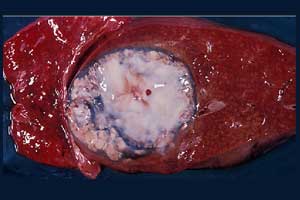- Home
- Editorial
- News
- Practice Guidelines
- Anesthesiology Guidelines
- Cancer Guidelines
- Cardiac Sciences Guidelines
- Critical Care Guidelines
- Dentistry Guidelines
- Dermatology Guidelines
- Diabetes and Endo Guidelines
- Diagnostics Guidelines
- ENT Guidelines
- Featured Practice Guidelines
- Gastroenterology Guidelines
- Geriatrics Guidelines
- Medicine Guidelines
- Nephrology Guidelines
- Neurosciences Guidelines
- Obs and Gynae Guidelines
- Ophthalmology Guidelines
- Orthopaedics Guidelines
- Paediatrics Guidelines
- Psychiatry Guidelines
- Pulmonology Guidelines
- Radiology Guidelines
- Surgery Guidelines
- Urology Guidelines
Tinidazole better than metronidazole in Amoebic liver abscess: Study

Tinidazole was found to be more effective as compared to metronidazole in terms of early clinical response, shorter treatment course, the favorable rate of recovery, and high tolerability for treatment of amoebic liver abscess according to a study published in the Indian Journal of Gastroenterology.
Metronidazole is commonly used by the clinicians for the amoebic liver abscess (ALA), but it has long course and significant side effects.
S.Pandey and his associates conducted a study to compare the efficacy of tinidazole over metronidazole in amoebic liver abscess.
Researchers from Sawai Man Singh, Medical College, Jaipur conducted a trial at the Department of Gastroenterology which enrolled 150 participants who were randomized into two equal treatment groups, metronidazole (group M, n = 75) and tinidazole (group T, n = 75). Patients were observed for clinical response, laboratory parameters, imaging, and side effects. Early clinical response (ECR) was defined as the absence of fever and abdominal pain within 72 h of treatment. Symptomatic clinical response (SCR) was defined as the absence of fever and abdominal pain irrespective of the duration of treatment required. Follow up was done at 1, 3, and 6 months.
The study found that:
- ECR was 62.3% in group T as compared to 37.7% in group M.
- SCR was shorter in group T than group M (3.29 ± 61 days vs. 5.67 ± 2.93).
- Mean residual volume at the end of 1 month was lower in group T (130.7 ± 1 vs. 184.7 ± 143.3 mL) and no significant difference was seen at 3 and 6 months.
- Tinidazole was better tolerated with fewer side effects.
- Low socioeconomic status, baseline abscess volume>500mL, hypoalbuminemia, pleural effusion, and history of ethanol use were associated with a late clinical response on univariate analysis of which low socioeconomic status was the only associated factor.
The study concluded that Tinidazole has an early clinical response, shorter treatment course, the favorable rate of recovery, and high tolerability as compared to metronidazole so, tinidazole can be preferred over metronidazole in an amebic liver abscess.
An amebic liver abscess is a collection of pus in the liver in response to an intestinal parasite called Entamoeba histolytica. Common symptoms include abdominal pain, cough, fever, and chills, diarrhea (in only one-third of patients), general discomfort, uneasiness or malaise.
For more reference log on to https://link.springer.com/article/10.1007/s12664-018-0848-7

Disclaimer: This site is primarily intended for healthcare professionals. Any content/information on this website does not replace the advice of medical and/or health professionals and should not be construed as medical/diagnostic advice/endorsement or prescription. Use of this site is subject to our terms of use, privacy policy, advertisement policy. © 2020 Minerva Medical Treatment Pvt Ltd